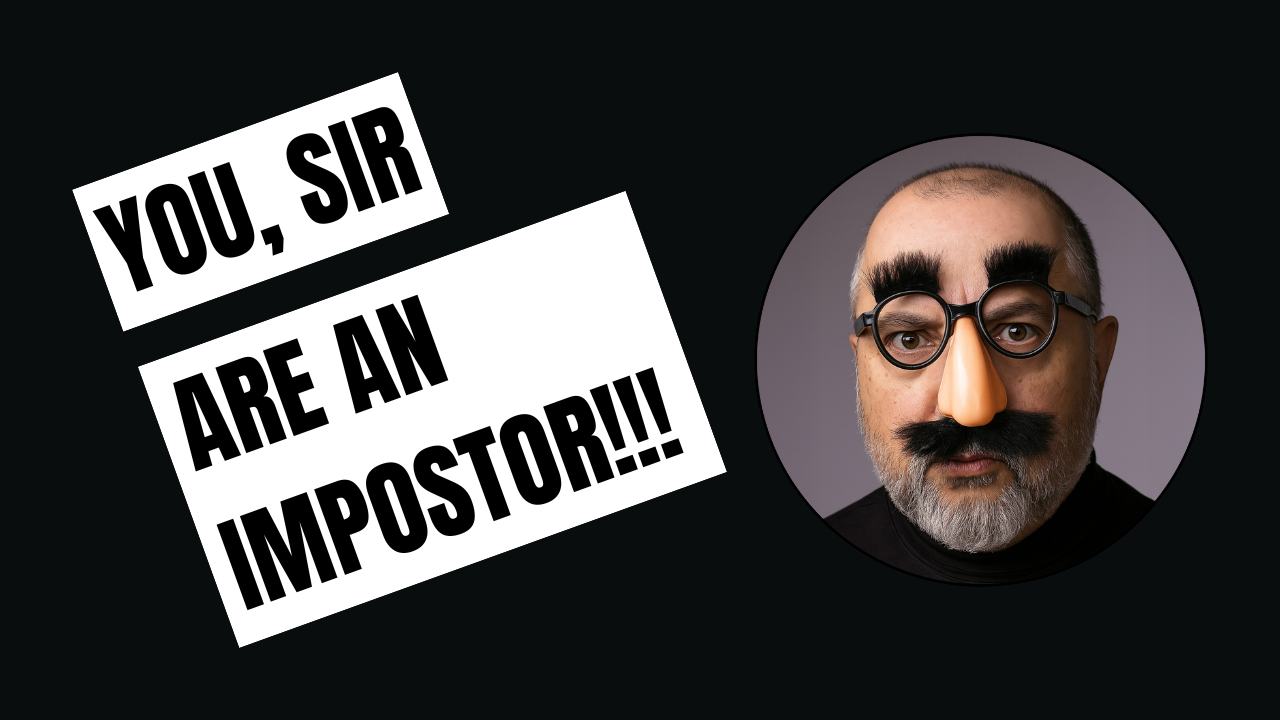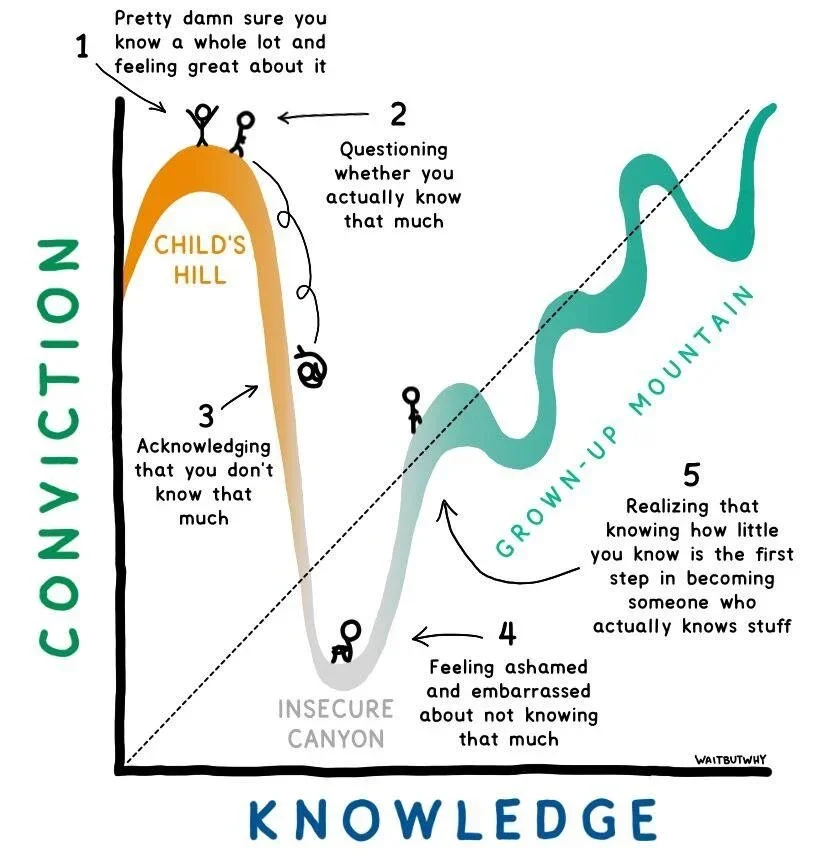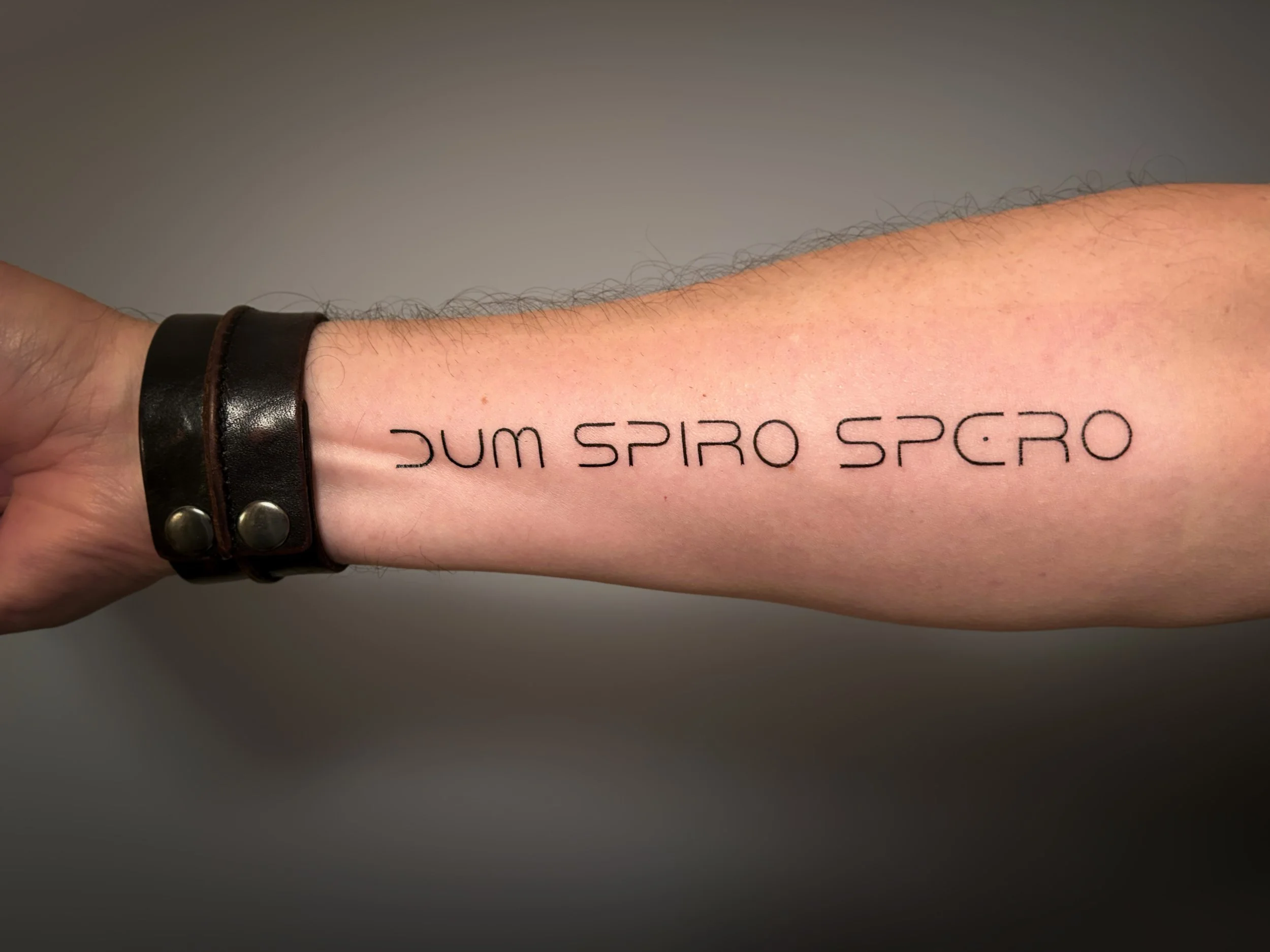IMPOSTOR SYNDROME: My Secret to Defeating It
It doesn’t matter what kind of creative you are - writer, singer, actor, dancer — or photographer. Any time you’re putting your work on display, you’re putting your heart and soul right out there with it. The whole world is free to, scrutinize, dissect, analyze, criticize, and pick your work apart piece by piece, until there’s nothing left but the rotting carcass of your self esteem.
The Ever-Present Adversary
And it’s during this extremely humbling undertaking that you’re likely to come across a very familiar adversary: Impostor Syndrome.
Now I know I’m not the first person to experience this phenomenon, nor am I the first to write about it. But I am going to give you my secret for coping with it — once and for all.
As a species, we’re hardwired to judge our surroundings, as in, “I wonder if fire is hot,” or “Hey, I wonder if that large stripy animal with the savagely sharp teeth would make a good pet.” It’s a trait that’s kept us alive since the dawn of humankind.
Now jump forward a couple of hundred thousand years, and you’re starting out as a photographer. Impostor Syndrome is inevitable, expected even. You’re like the new kid in school and it’s a given that you will measure yourself against your new cohort — and expect that they will be doing the same, testing your limits, weighing your skills, judging whether you belong in their world.
As a creative, it’s a rite of passage, but it’s bound to make you feel more than a bit self-conscious. You’re going to compare yourself to photographers you admire. It’s a natural way to give you a goal to strive for, and to build a reserve of inspirations to launch you toward that goal.
It’s a given that you're going to feel inferior to those that have walked before you. But as you build your portfolio with a consistent selection of solid work, and people start praising you for the images they receive, your confidence gains strength, and you start to realize that your reputation is building momentum.
So you happily wave goodbye as Impostor Syndrome fades in your rearview mirror, and you cruise down the expressway toward a prosperous future fuelled by your passion.
But then a funny thing happens. You pull into the next truck stop on your journey to becoming a successful photographer and look who jumps into the passenger seat: It’s your old friend Impostor Syndrome.
The Two Faces of Doubt
Now for me, he tends to show up at two key moments: One, when I’ve just booked a promising new client, one that offers new challenges and the potential to open a host of creative doors. It doesn’t matter how much I’ve prepared for the shoot, or how positively the client rates my work, that nagging voice always resurfaces, lurking in the back of my mind, chipping away at my confidence.
“What if I can’t deliver.”
“What if I can’t get the lighting right.”
“What if I can’t build a rapport with the client?
“What if I can’t capture the client’s vision the way I’d imagined.”
It’s not the least bit helpful.
The second way it surfaces is a lot more insidious and, potentially, a lot more damaging. It’s when no one is booking you. Despite your growing list of achievements, despite some stellar reviews, despite your solid portfolio, your calendar is a desert wasteland.
So you start to doubt. You start to wonder if you’ve got it all wrong. You start to panic that your best work was just a fluke. Or worse — that the people who heaped praise on you were just being kind.
After all, if your work was so good, people should be beating down your door, no? Not necessarily, and that’s a discussion best left for the photographers who’ve already cracked the marketing equation.
All you need to understand is that Impostor Syndrome needn’t be feared. In fact, my secret to conquering it is to embrace it, welcome it, celebrate it.
And here’s why.
Enter the Dunning-Kruger Effect
Have you ever heard of the Dunning-Kruger Effect? It’s sort of the exact opposite of Impostor Syndrome. Psychologists call it a “cognitive bias”, which is just a fancy way of saying it’s a trick our brains play on us. I could baffle you (and probably myself) with a lot of jargon and flowcharts, but here’s the nuts and bolts of how it works: when someone doesn’t know very much about a subject, they don’t even know enough to see how little they know. And because of that, their confidence shoots way up. They think, “Hey, I’ve got this all figured out, man.”
The Dunning-Kruger Effect
You’ve seen it before: someone picks up a camera, shoots a handful of portraits, and suddenly they’re calling themselves a master photographer.
But the truth is, the more experienced you actually become, the more you see how much there is still to learn. That awareness can feel overwhelming — and that’s often when Impostor Syndrome sneaks in.
But the beautiful irony of it is that if you’re questioning yourself, if you’re doubting your abilities, then that probably means you’re further along on your journey than you think. It’s sign of self-awareness. The people who never question themselves, they’re usually the ones who should.
My Personal Mantra
So how do I cope when this feeling grips hold of me? How do I keep my confidence afloat when the waves of doubt are crashing around me? It’s simple: I have a mantra. Or call it a catchphrase, a slogan. I believe so much in this mantra that I have it tattooed on my forearm so I never forget, never lose sight of its power.
It’s a simple script, written in latin: Dum Spiro Spero - “While I breathe, I hope.”
“While I breathe, I hope…”
There are nights I lie awake, staring at the ceiling, thinking about all the ways I’ve failed to get my business off the ground, thinking about all the personal flaws that impede my progress, thinking about the skills I’ve yet to master.
And in that darkness, I feel this momentary sense of panic wash over me. It feels like The Fates are messing with me, testing my resolve, taunting me, asking me if I still think I’ve got what it takes. The worst part, is that in those darkest hours, I can’t even see my tattoo, I’ve got nothing to cling to for support.
My confidence wavers. My foundation begins to shake. But you know what? As corny as it may sound, no matter how dark it gets, I know there will be that inevitable moment when the dawn breaks, and I can once again see that tattoo. My optimism starts to rise and my hope flickers back to life.
So this tattoo is not just decoration. It’s not just an empty promise. It’s a totem, if you will, a concrete reminder that no matter how hopeless things seem, or how strong the tide crashes against me, I need to stay in the fight.
Because the only way things will get better, is if I’m here to make things better — still breathing, still hoping, still doing the work.
Embrace, Don’t Erase
So embrace your Impostor Syndrome. Don’t fear it. Don’t let it drain your resolve. Don’t ignore its voice, but don’t let its voice grow louder than your self-confidence. It can be a necessary part of your psyche, but don’t let it be the dominant part.
When it challenges you, call its bluff and rise to that challenge.
When it makes you feel uncomfortable, use its energy to push yourself out of your comfort zone.
Impostor Syndrome — that voice of doubt — it’s not there to tear you down. It’s there to keep you humble, to keep you sharp, to keep you learning, to keep you growing, to keep you moving forward.
Stay in the Fight
So if you’re out there right now, paralyzed by despair and wondering whether you’re good enough, rest assured: you are! Because if you care enough to ask the question, that alone proves that you’re still in the fight.
Be proud of that fact and hang in there. Only you have the power to make things better.



